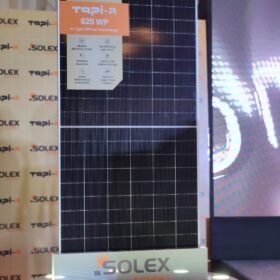meteocontrol has many years’ experience monitoring PV systems, which in turn gives the company access to an enormous quantity of measurement data. As a result, meteocontrol draws from a highly representative basis for calculating the projected capacity of fed-in power from solar energy. Instead of relying on assumptions, the forecasts draw from real operating data provided by over 43,000 PV systems registered in the meteocontrol portal that together produce a total installed power output of around 12 gigawatts. This gives meteocontrol the ability to compare the predicted energy quantity with the quantity actually generated. Forecasts with exact coordinates provided by national and international weather services are considered in the calculations. With the help of machine learning, the very latest in computer learning methods, meteocontrol links this information to the live online feed in and forecasts derived from satellite images in order to produce an optimum grid prediction. By calculating the current status, the Augsburg-based company achieves much higher-quality predictions for intraday forecasts than conventional procedures yield.
Online feed in for the emerging PV markets
“For grid operators, the online feed in and forecasts are extremely important for ensuring stable grids and the optimum power supply. In many European countries, using online feed in and forecasts has already become standard practice as they are also used for market regulation as well as serve as a basis for such remuneration models as the EEG remuneration in Germany,” explains Robert Pfatischer, Managing Director of meteocontrol. “For many years, the four German grid operators have used our forecasts and online feed in. With the current solar boom on every continent around the globe, they’re becoming more important on an international level, too. India, China, the whole of Latin America: These and many other countries and regions have ambitious development targets and need quick, reliable forecasts. meteocontrol can provide them!”
Highlighting potential improvements
Using the PV feed-in data collected by meteocontrol, interesting developments and possible potential for optimization can be highlighted. The latest evaluation shows that solar-energy production in Germany increased only very slightly over the last three years and was less than the 2.5 gigawatts per year needed to achieve the country’s climate targets. Although fed-in energy reached a record level last year, maximum feed-in fell from 72.5 percent to 72 percent. One reason for this was bad weather during periods when the maximum solar-energy yield was to be expected from a meteorological point of view. Other reasons include aging PV systems with reduced efficiency and the feed-in management of grid operators. With precise grid predictions and highly accurate live online feed in, down-regulation can be largely avoided and solar systems are only rarely affected by this. Optimum grid management also reduces the use of conventional generation systems. meteocontrol’s aim is to establish this standard in all PV markets worldwide and thus encourage the integration of solar energy.





